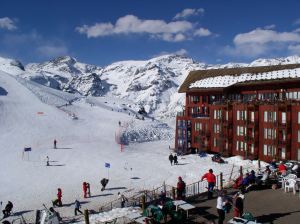 I couldn’t have timed it better, arriving in town during the week of the Feria de Abril de Sevilla, a vivacious celebration of country traditions, equine style and fiery flamenco. Once a simple cattle market, Seville’s April Fair has grown into one of Spain’s most joyful and vibrant festivals.
I couldn’t have timed it better, arriving in town during the week of the Feria de Abril de Sevilla, a vivacious celebration of country traditions, equine style and fiery flamenco. Once a simple cattle market, Seville’s April Fair has grown into one of Spain’s most joyful and vibrant festivals.
Each afternoon of the fair sees the most important bullfights of the year occur in the country’s oldest bullring, the Plaza de Toros de la Real Maestranza de Caballería de Sevilla, after which thousands of spectators cross the Guadalquivir River for an evening of fun, food and dance.
Everyone in town seems to be wearing traditional glad rags as they sashay over to the fairground in the barrio of Los Remedios where, from dusk until dawn, guitars strum, heels drum and dancers swirl.
Women express full flamenco flair in their traditional costumes, gleaming bracelets, brooches and earrings, hair fixed with ornamental comb and flower, an embroidered shawl (manton) around their shoulders. They swirl across the bridge, creating an intoxicating kaleidoscope of polka dots, ruffles and frills.
Entry to the fairground is under a splendid arch of fairy lights opening onto avenues of richly decorated party tents (casetas ) lit by garlands of orange lanterns. As darkness falls the fairground transforms into a lamp-lit tented city echoing with song and laughter.
Each caseta hosts private celebrations of guitar, song and dance, fuelled by glasses of manzanilla. For an invitation you need the right connections. Along with most of the crowd I simply wander, observe, listen and enjoy. And when dancing spills onto the avenues I shrug off inhibitions and join in.
Most of all I’m fascinated by the ceaseless pageant of horse-drawn carriages patrolling the avenues. Seville’s April Fair is said to be the largest annual gathering of horses and carriages in the country. The carriage occupants and scores of riders alongside, often riding two-up, are dressed in their finest.
To make the most of the Fair you need be able to celebrate all night and then, by lunchtime, be ready to begin over again. Surviving seven days of non-stop festivities requires staunch stamina and essential siestas – both fundamental to Spanish style.
# Seville’s April Fair is normally held two weeks after Semana Santa (Holy Week).







